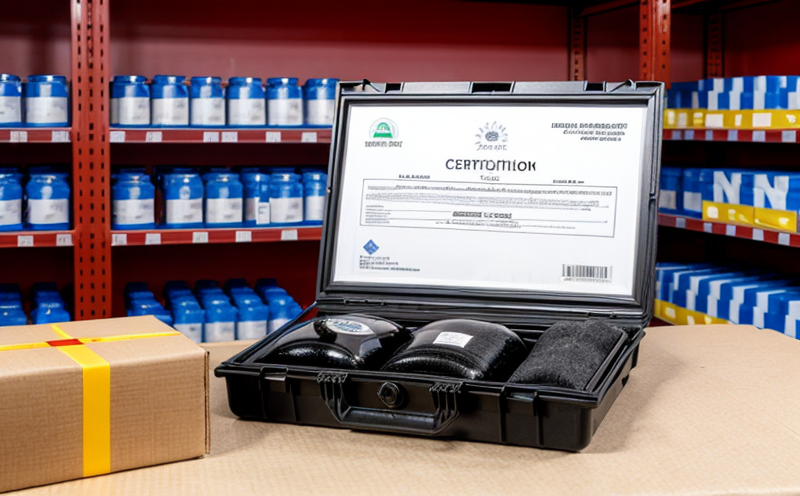Certification for Safety in Packaging and Labeling: A Comprehensive Guide
In todays highly regulated market, ensuring the safety of packaging and labeling has become a top priority for manufacturers and suppliers. With increasing consumer awareness about product safety and environmental concerns, companies are under pressure to demonstrate their commitment to safety standards. One way to achieve this is through certification programs that verify compliance with relevant regulations and industry best practices.
Understanding Certification for Safety in Packaging and Labeling
Certification for safety in packaging and labeling involves a third-party evaluation of a companys processes, systems, and products to ensure they meet established safety standards. This assessment covers various aspects, including:
Compliance with regulatory requirements
Hazard identification and risk management
Safe design and manufacture of packaging materials
Labeling and instructions for use
Quality control and assurance
What is the Purpose of Certification?
The primary purpose of certification is to provide assurance that a companys products and processes meet specified safety standards. This involves demonstrating compliance with relevant regulations, industry best practices, and customer expectations. By obtaining certification, companies can:
Enhance their reputation and credibility
Increase consumer trust and confidence
Improve product quality and performance
Reduce the risk of regulatory non-compliance and associated fines or penalties
Key Benefits of Certification
Obtaining certification for safety in packaging and labeling offers several key benefits, including:
Improved safety: Compliance with established standards and regulations ensures a safer environment for consumers and workers.
Increased customer trust: Certification provides assurance that products meet high-quality and safety standards, leading to increased customer loyalty and retention.
Competitive advantage: Certified companies can differentiate themselves from competitors and establish a market leadership position.
Cost savings: Compliance with regulations and industry best practices can reduce costs associated with recalls, litigation, and regulatory non-compliance.
Detailed Information on Certification
Here are two detailed paragraphs in bullet point format providing additional information on certification for safety in packaging and labeling:
Compliance with Regulatory Requirements
Compliance with regulatory requirements is a critical aspect of certification. Relevant regulations include:
UN Recommendations on the Transport of Dangerous Goods: This standard sets out guidelines for the safe transport of hazardous materials.
ISO 11675:2016 Packaging for Human Pharmaceuticals - Particular Requirements
EU Directive 2004/22/EC on Packaging and Packaging Waste
Compliance with these regulations involves:
Ensuring that packaging materials are compatible with the product and do not compromise its safety or efficacy
Providing clear labeling and instructions for use
Conducting regular inspections and audits to ensure ongoing compliance
Hazard Identification and Risk Management
Hazard identification and risk management are essential components of certification. This involves:
Identifying potential hazards associated with packaging materials, such as:
Chemicals used in manufacturing processes
Packaging materials that may be contaminated or damaged during transportation
Labeling errors or miscommunication to consumers
Assessing and mitigating risks associated with these hazards, including:
Implementing controls to prevent chemical contamination
Conducting regular quality control checks on packaging materials
Providing clear instructions for use and safety information
QA Section
Here are some additional questions and answers providing further details on certification for safety in packaging and labeling:
Q: What is the difference between certification and compliance?
A: Certification involves a third-party evaluation of a companys processes, systems, and products to ensure they meet established safety standards. Compliance, on the other hand, refers to a companys adherence to regulatory requirements without necessarily obtaining certification.
Q: Which organizations offer certification for safety in packaging and labeling?
A: Various organizations offer certification programs for safety in packaging and labeling, including:
International Organization for Standardization (ISO)
American Society for Testing and Materials (ASTM)
National Sanitation Foundation (NSF)
UL (Underwriters Laboratories)
Q: How long does the certification process take?
A: The length of time it takes to obtain certification varies depending on several factors, including:
The complexity of the product or service
The level of preparedness and compliance with regulatory requirements
The efficiency of the certification body
Typically, the certification process can take anywhere from a few months to a year or more.
Q: Is certification mandatory?
A: While certification is not always mandatory, it is often required by law in certain industries or for specific products. Additionally, many companies choose to obtain certification as a means of demonstrating their commitment to safety and quality standards.
Q: What are the costs associated with certification?
A: The costs associated with certification vary depending on several factors, including:
The type of product or service being certified
The level of complexity involved in the certification process
The fees charged by the certification body
Typically, the costs range from a few thousand to tens of thousands of dollars.
Conclusion
In conclusion, obtaining certification for safety in packaging and labeling is an essential step towards ensuring product safety and regulatory compliance. By understanding the key aspects of certification, including compliance with regulatory requirements, hazard identification and risk management, and key benefits such as improved safety and increased customer trust, companies can make informed decisions about their certification strategy.

































